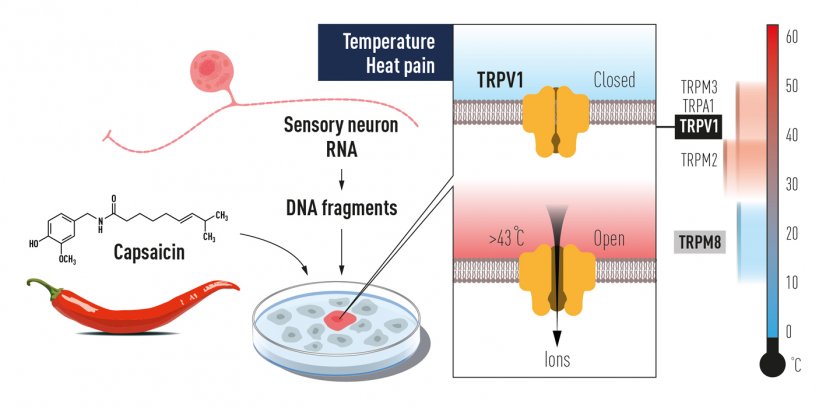
Nobel peace prize winner showcases unique embroideries by Coloreel
Textile scientists have worked for decades to better simulate the feel or touch of fabrics.

5th October 2021
Innovation in Textiles
|
Texas, USA
US-based scientists David Julius and Ardem Patapoutian have this week been named the winners of the 2021 Nobel Prize in physiology or medicine, for their work in discovering the human receptors for temperature and touch.
David Julius utilised capsaicin, a pungent compound from chili peppers that induces a burning sensation, to identify a sensor in the nerve endings of the skin that responds to heat. Ardem Patapoutian used pressure-sensitive cells to discover a novel class of sensors that respond to mechanical stimuli in the skin and internal organs. These breakthrough discoveries launched intense research activities leading to a rapid increase in our understanding of how our nervous system senses heat, cold, and mechanical stimuli. The laureates identified critical missing links in the understanding of the complex interplay between the senses and the environment.
“Responses to stimuli such as warmth or cold, friction and outside pressure play an important role in the consumer acceptance of textiles and other products and the basic work undertaken by the Nobel laureates will give us a better understanding of sensory perception at the molecular level,” says Professor Seshadri Ramkumar, of the Nonwovens and Advanced Materials Laboratory at Texas Tech University. “Textile scientists have worked for decades to better simulate the feel or touch of fabrics. Cotton is pre-sold based on its comfort and its next to skin friendliness and wool is preferred for its thermal comfort, which depend on the neural responses based on external stimuli such as smooth or rough, hot or cold, etc.”
The major field known as “hand,”, he adds, evolved during the 1970s due to the pioneering work of Japanese scientists Professor Sueo Kawabata and colleagues, leading to a standardized evaluation method.
This year’s Nobel recognition has a personal resonance for Ramkumar, who is heavily involved with the understanding of the touch of fabrics and undertook doctoral dissertation research on the hand of fabrics at the University of Leeds some years ago.
“The field of touch or haptics is multidisciplinary in nature involving tribology, mechanics, materials science, neuroscience, etc.,” he explains. “The work at Leeds led to the development of an artificial human finger to evaluate the feel of fabrics using polymethyl siloxane to mimic human responses. With more emphasis on sustainable materials, how these materials appeal to consumers matters, and both basic and applied level research is needed in the textile sector on the feel of fabrics. This year’s Nobel prize reiterates the importance of sensory science in the textiles and allied fields.”

Business intelligence for the fibre, textiles and apparel industries: technologies, innovations, markets, investments, trade policy, sourcing, strategy...
Find out more